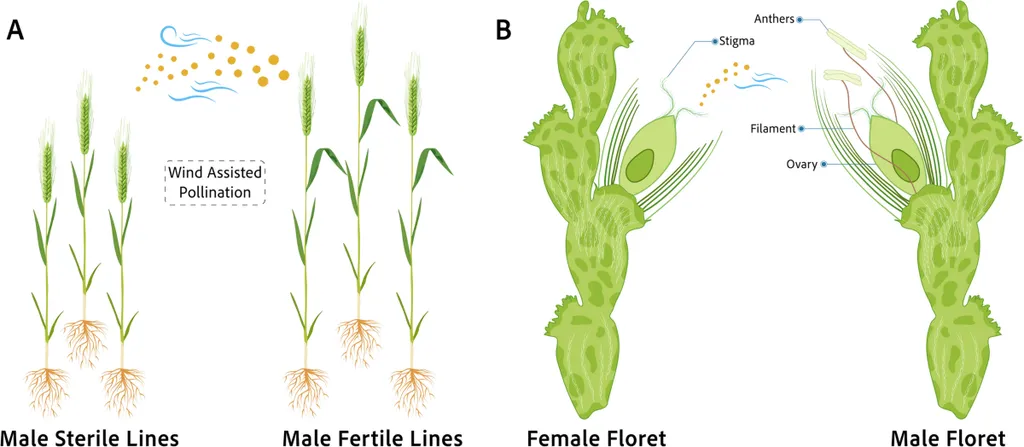In a significant stride towards unraveling the mysteries of cytoplasmic male sterility (CMS) in tobacco, a recent study published in *Frontiers in Plant Science* has shed light on the intricate molecular mechanisms underlying this phenomenon. The research, led by Chaoliang Hou from the Hunan Provincial Engineering and Technology Research Center for Agricultural Big Data Analysis and Decision-Making at Hunan Agricultural University, integrates transcriptomic and proteomic analyses to provide a comprehensive understanding of CMS, a critical tool for exploiting heterosis to boost agricultural productivity.
CMS is a condition in which plants fail to produce viable pollen, a trait that is invaluable for hybrid seed production. However, the genetic and molecular mechanisms driving CMS in tobacco have remained largely obscure—until now. Hou and his team systematically analyzed the regulatory networks of CMS using advanced transcriptomic, proteomic, and morphological techniques. Their findings reveal that carbohydrate metabolism plays a pivotal role in the development of CMS.
Morphological observations highlighted premature stamen degeneration in CMS lines, leading to failed self-pollination. The integrated analyses identified 5,024 differentially expressed genes (DEGs) and 159 differentially expressed proteins (DEPs). Notably, several key enzymes involved in carbohydrate metabolism, such as hexokinase, pyrophosphate-fructose 6-phosphate 1-phosphotransferase, and glyceraldehyde-3-phosphate dehydrogenase, were significantly downregulated at both the transcript and protein levels in the CMS lines. This downregulation likely restricts the supply of essential substrates and ATP, thereby impairing floral and pollen development and reducing fertility.
“Our findings suggest that impaired carbohydrate metabolism is a critical factor in the development of CMS in tobacco,” Hou explained. “Understanding these molecular mechanisms is crucial for developing strategies to manipulate CMS and enhance hybrid seed production.”
The study also identified several transcription factors as potential regulators of carbohydrate metabolism genes involved in floral organ development. These include a CCCH-type zinc finger protein, an ethylene-responsive factor RAP2–4, and a LOB domain-containing protein. These insights could pave the way for targeted genetic modifications to improve crop fertility and yield.
The commercial implications of this research are substantial. By elucidating the molecular basis of CMS, scientists can develop more efficient and reliable methods for hybrid seed production, a cornerstone of modern agriculture. This could lead to increased crop yields and improved food security, particularly in regions where hybrid crops are widely cultivated.
Moreover, the findings could have broader applications beyond tobacco. As Hou noted, “The regulatory networks we’ve identified in tobacco may also be relevant to other crop species, offering new avenues for research and agricultural innovation.”
This study not only advances our understanding of CMS but also highlights the potential of integrating transcriptomic and proteomic analyses to unravel complex biological processes. As the agricultural sector continues to face challenges such as climate change and population growth, such research is invaluable for developing resilient and productive crop varieties.
In the quest for sustainable agriculture, every breakthrough brings us one step closer to a future where food security is not just a goal but a reality. This research is a testament to the power of scientific inquiry and its potential to transform the agricultural landscape.

